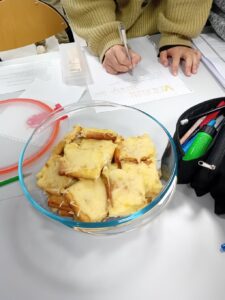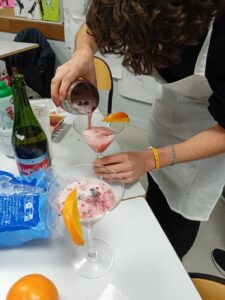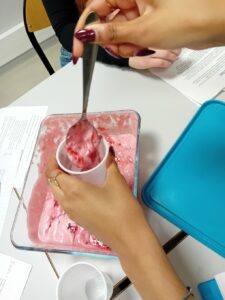A Taste of Victorian Britain



To close off a lovely school trip to York, we did one last activity with the European section. They were tasked with preparing a Victorian dish: a starter, a main meal, a dessert or a drink. We spent out last hour of the day on Monday evening tasting the delicious dishes that has been prepared. In total, there were seven groups. They each went into their corner of the room to present their dish while the Section Internationale students rotated round the groups. Not only did we get to taste their preparations but we also got the chance to learn about the histories, context and relevant, the ingredients and the recipes. Although all the dishes were very good, one of my favourites was the raspberry fool.
Raspberry fool is a classic British dessert dating back to the 16th century, particularly famed for its simplicity and delightful flavour. It’s made by blending fresh raspberries (a fruit that is in season from June to August), sugar (an ingredient that was imported from British colonies), and cream (a very popular ingredient used in British cuisine). You can also add a dash of vanilla or lemon for extra flavour. The recipe has a vibrant pink colour, a light but creamy texture and a sweet taste. This recipe is the perfect summer treat to cool you down. It can be served at a casual family dinner the same way it can be served at a fancier event.
The main ingredients, raspberries and cream, highlight the Victorian appreciation for seasonal and local produce. During the Victorian era, desserts like raspberry fool were a popular way to showcase the natural flavours of fruit. Raspberries are a summer fruit, abundant with colour and taste. The dessert has its roots in British culinary heritage and its origins can be traced back several centuries. While the exact inventor is unknown, the name ‘fool’ is likely to come from the French word ‘fouler’, meaning to crush or to press, referring to the way the fruit is prepared. Raspberry fool continues to be a cherished dessert symbolising the elegance and the simplicity of traditional British cooking. It is a recipe that is still deeply rooted with British culinary tradition.
As we rotated to all the different stations, I noticed how each dish had its own unique story. This activity showed us how food connects to culture and history in interesting ways. It made us learn more about Victorian cuisine in a simple and enjoyable way and everyone gained a better understanding of Britain’s culinary traditions. Whilst all the dishes tasted as good as they looked, the raspberry fool really stood out to me (mainly because of the bright pink colour). In my opinion, it smelled like raspberry flavoured yoghurt. The group in charge of this recipe explained that they had found this recipe browsing on the interned for Victorian dishes. It held their attention because it seemed so simple and tasty.
By Aline 1e SI GB

